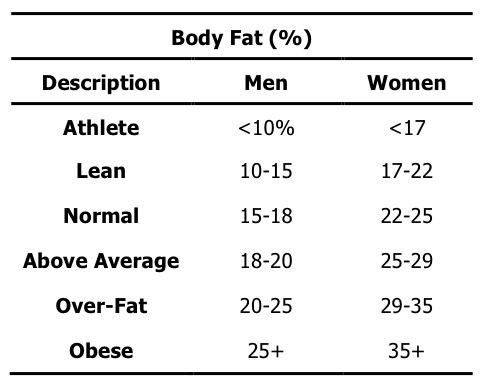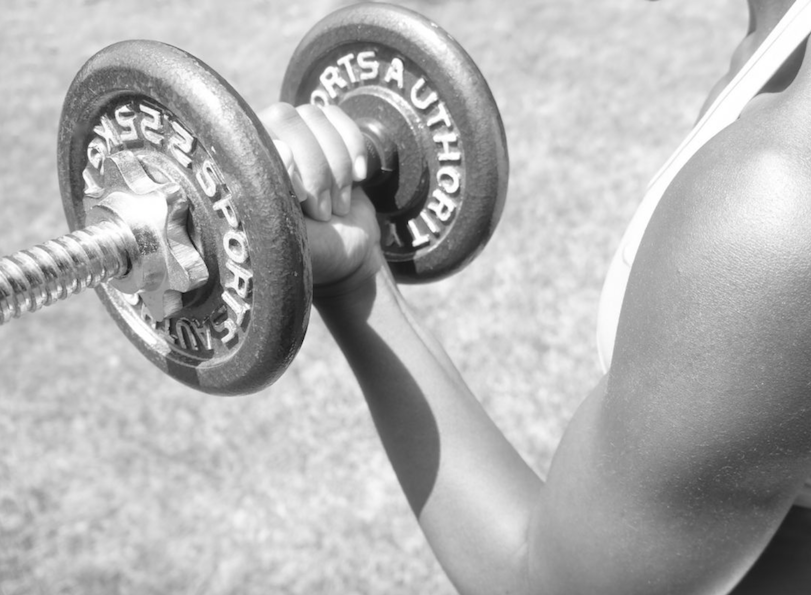Think having a “normal” body weight equates to being healthy?
If your answer is yes, you’re sadly mistaken.
Unfortunately, when it comes to measuring health, many rely solely on the scale. While the scale reading generally provides a quick glimpse into your risk for obesity, your body weight alone is a very poor measure of your health status – and oftentimes, even your level of “fatness”.
Unbeknownst to many, excess body fat is what puts you at increased risk for chronic conditions like heart disease, high cholesterol, high blood pressure, type 2 diabetes, and many forms of cancer. This holds true whether your body weight is classified as “normal” or “obese”, especially if you tend to carry fat around your midsection (apple shape).
Related Article: What It Means to Have an Apple-Shaped Body
But, before I give you the full skinny on being fat, let me tell you a little bit about body weight in general.
Body weight is comprised of fat and lean mass components including muscle, bone, and fluids like blood and water. Together, these make up your body composition. An ideal body composition is one that encompasses a low fat-to-lean mass ratio relative to overall body weight.
Related Article: The Body Mass Index Versus Body Composition: What You Need to Know
 As such, it is your body composition that determines whether or not you’re at a “healthy” body weight.
As such, it is your body composition that determines whether or not you’re at a “healthy” body weight.
Now, muscle is one of the most important components of body composition, as it’s a key determinant of your metabolism (the rate at which your body burns calories).
Plainly stated, muscle is more metabolically active than fat.
The more muscle you hold, the higher your metabolism; therefore, you’ll naturally burn more calories on a daily basis. On the flip side, when muscle wastes away, metabolism is inherently reduced so your tendency to gain fat will increase.
Related Article: The Important Role of Metabolism in Weight Loss
The two factors that have the most profound impact on your body composition are the amount of calories you consume and the amount you burn on a daily basis. A sensible, well-balanced diet coupled with regular cardiovascular (cardio) exercise is the absolute best way for you to minimize unhealthy accumulation of body fat.
But it doesn’t stop there!
You must also perform regular resistance (weight) training in order to preserve your muscle mass.
If you don’t use your muscles, they’ll surely waste away.
Naturally thin people who are rarely active tend to learn this the hard way, especially thirty-somethings. In fact, inactive people typically lose about 10% of lean mass for every decade after thirty. This is largely due to natural declines in muscle mass and consequent reductions in metabolism.
With declines in lean mass starting in the thirties it’s much easier to become fat, even for a person who’s been skinny all their life. While such declines with aging are inevitable, the rate at which this occurs is absolutely controllable with sensible eating and regular exercise.
Related Article: Why Exercise Alone Won’t Get Rid of Belly Fat
In order to gain a clearer understanding of how “fat” you really are, consider having your body composition professionally assessed. These assessments can run anywhere from $20-$200 out of pocket, but it’s a healthy investment.
Contact a local health club or the recreation department at a local college or university. Most colleges and universities offer body composition assessments at incredibly low prices and sometimes even free of charge if you participate in research studies.







